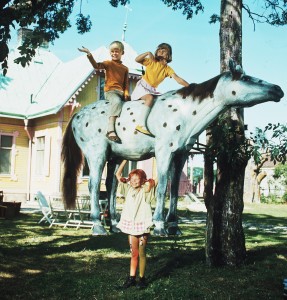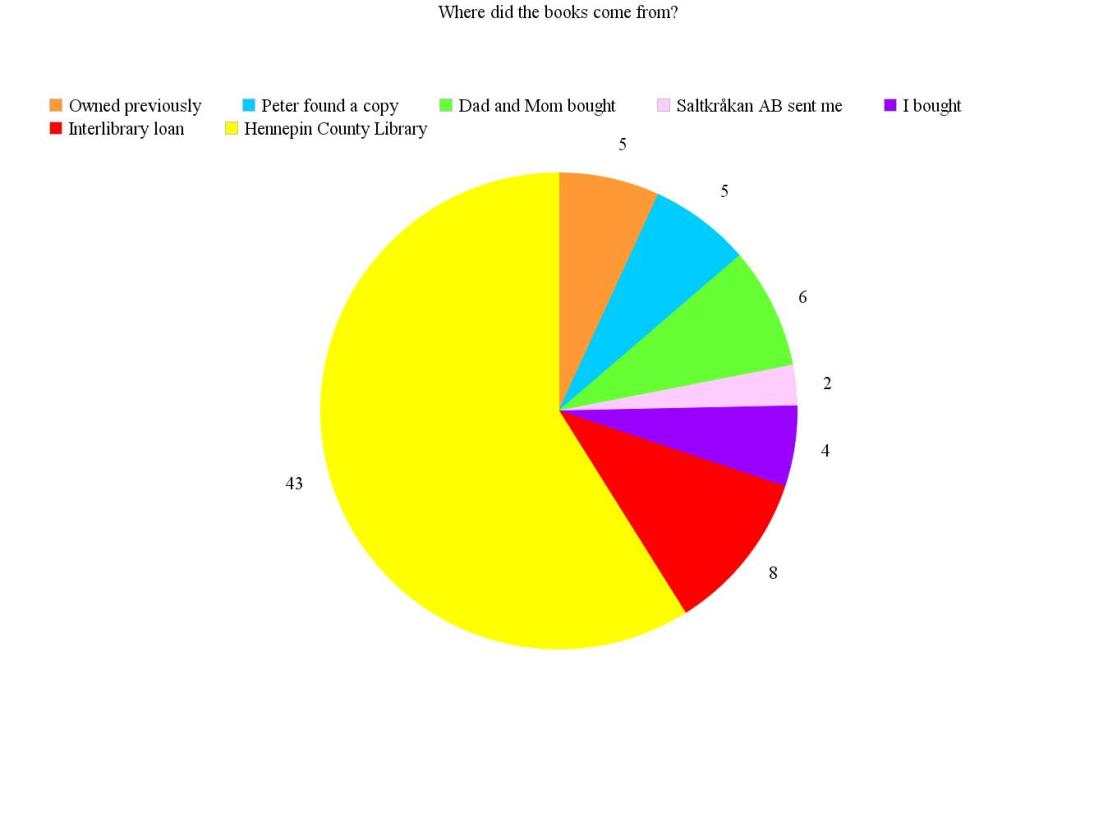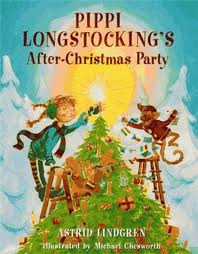 This is the forgotten series by Astrid Lindgren(besides that Children of the World series which everyone has been trying to forget). There are three Kati books that chronicle a young woman’s life. The edition of Kati in Paris (Swedish: Kati i Paris, 1953, no translator listed) that I read included a handful of pictures by Daniel DuPuy, all in color and on glossier paper than the rest of the book. I mention this because the book feels and looks different from anything else Lindgren wrote — and the subject matter follows suit. These were obviously written for an older audience and they read like teen fiction. Astrid Lindgren’s official site sums it up: Today these three Kati-books appear to have their own special genre, of which this is the last: books for girls with a combination of reporting, portrayal of a woman’s business-life and in this last “edition”, a love-and-marriage novel.
This is the forgotten series by Astrid Lindgren(besides that Children of the World series which everyone has been trying to forget). There are three Kati books that chronicle a young woman’s life. The edition of Kati in Paris (Swedish: Kati i Paris, 1953, no translator listed) that I read included a handful of pictures by Daniel DuPuy, all in color and on glossier paper than the rest of the book. I mention this because the book feels and looks different from anything else Lindgren wrote — and the subject matter follows suit. These were obviously written for an older audience and they read like teen fiction. Astrid Lindgren’s official site sums it up: Today these three Kati-books appear to have their own special genre, of which this is the last: books for girls with a combination of reporting, portrayal of a woman’s business-life and in this last “edition”, a love-and-marriage novel.
Yes. This is the only book I’ve read by Lindgren that by any stretch of the imagination could be called a romance novel or a “love-and-marriage” novel, though all of Astrid’s books deal with love in some form. I enjoyed seeing this side of Lindgren’s writing. Although I jumped into the series at the end due to a quirk in the library system, I loved the depth of the characters she created.
There’s Lennart, Kati’s fiance, of whom she says, “Lennart was far from the first man in my life. He was the second, and I hoped he would be the last.”
There’s Eva, Kati’s BFF, who she describes like this: I was thinking of the list Eva had in her desk drawer in the office: ‘If I get rabies, these are the people I’m going to bite.'”
And then there is Paris: “Old cities are strange. Human beings crowd together, live their brief lives, work, love, laugh, and cry for a time in this city which they call Paris. Gradually they die, and their places are taken by other people who work and love and laugh and cry; and then they, too, are gone. But don’t they leave behind something of their joy and their pain, their desires, their thoughts, their sorrows and their longing, their hates, their fears? Isn’t that what I feel when I walk around in their city? Don’t the cobblestones murmur a quiet account of those who lived here before? I can go anywhere in Paris, and those who live here. . .can’t outshout the cobblestones.”
Of course, there’s part of me that chafes at the fact that Kati gives up her job which she is fond of in order to have a baby. But there are also progressive ideas in this book, like the fact that Kati and Lennart move next door to Kati’s friend Eva. Eva is such a part of Kati’s life – a part that Lennart just has to accept and love. Indeed, it seems that Lennart gives up more for the marriage than Kati does, straining his relationship with his mother.
In the end, you can tell that this book was written in the 1950s and not in the 2000s, but its tone is, if anything, quaint – far from oppressive or offensive. As a stand-alone book, I enjoyed it, although descriptions of Paris would be tremendously tedious if one has not been to Paris and already developed a love for it. The Kati books are very rare, though, so finding a copy to read will be a challenge. I was only able to read Kati in Paris because my boyfriend Peter finagled it from an out-of-state library. Major thanks to Peter.


 This is the forgotten series by Astrid Lindgren(besides that Children of the World series which everyone has been trying to forget). There are three Kati books that chronicle a young woman’s life. The edition of Kati in Paris (Swedish: Kati i Paris, 1953, no translator listed) that I read included a handful of pictures by Daniel DuPuy, all in color and on glossier paper than the rest of the book. I mention this because the book feels and looks different from anything else Lindgren wrote — and the subject matter follows suit. These were obviously written for an older audience and they read like teen fiction. Astrid Lindgren’s official site sums it up: Today these three Kati-books appear to have their own special genre, of which this is the last: books for girls with a combination of reporting, portrayal of a woman’s business-life and in this last “edition”, a love-and-marriage novel.
This is the forgotten series by Astrid Lindgren(besides that Children of the World series which everyone has been trying to forget). There are three Kati books that chronicle a young woman’s life. The edition of Kati in Paris (Swedish: Kati i Paris, 1953, no translator listed) that I read included a handful of pictures by Daniel DuPuy, all in color and on glossier paper than the rest of the book. I mention this because the book feels and looks different from anything else Lindgren wrote — and the subject matter follows suit. These were obviously written for an older audience and they read like teen fiction. Astrid Lindgren’s official site sums it up: Today these three Kati-books appear to have their own special genre, of which this is the last: books for girls with a combination of reporting, portrayal of a woman’s business-life and in this last “edition”, a love-and-marriage novel.
Written
on April 18, 2015